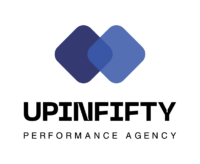SEO Glossary Terms
SEO Glossary Page
In this SEO glossary page, you will find all the important terms and jargon in the real estate SEO industry. If you’re looking to rank higher and generate more leads via organic SEO traffic, these SEO glossary terms will help you do that.
| 301 Redirects | A 301 redirect is an HTTP status code that is used to manage web traffic and guarantee that visitors and search engines are sent to the correct location on the internet. |
| 302-redirect | A 302 redirect serves as a short-term redirect, guiding users and search engines to the intended page for a limited period until it’s taken down. It can appear as either “302 Found” (HTTP 1.1) or “Moved Temporarily” (HTTP 1.0). |
| 404-page | A 404 page, often known as an error page, is what visitors see when they try to access a page that does not exist on our website. It’s the page that servers display when it can’t locate the URL that the user has requested. |
| Alt tag | An alt tag, also known as an “alternative tag” or “alt attribute,” is a basic but important piece of information used in HTML code to describe pictures on a website. |
| Anchor text | The clickable, hyperlinked text on a web page or document is called anchor text. It is frequently highlighted in a distinct color and underlined to differentiate it from the rest of the text. |
| Backlinks | Incoming links from a single website to another are known as backlinks. Inbound links and incoming links are other terms for them. Backlinks are essential in search engine optimization (SEO) since they are used to determine the authority and trustworthiness of a website. |
| BERT | Google BERT, which stands for Bidirectional Encoder Representations from Transformers, is an advanced natural language processing model developed by Google. Its primary goal is to improve the search engine’s understanding of user queries. |
| Black hat SEO | In reference to SEO, “Blackhat” refers to techniques or practices that violate search engine guidelines and are used to manipulate search engine rankings. Typically, these techniques aim to achieve fast results and obtain an unethical advantage over competitors. |
| Bounce Rate | The bounce rate calculates the proportion of visitors that arrive at a website and then depart without engaging further or traveling to any other pages on the same website. In other words, it indicates the proportion of visitors to a specific page. |
| Breadcrumb Navigation | Breadcrumb navigation is a website navigation strategy that assists visitors in understanding their present placement within the hierarchical structure of a website. |
| Canonical Tag | A canonical tag, also called a canonical link or rel=canonical, is an HTML element used to combat duplicate website content. |
| Content Hub | A content hub is a compact online forum or website that acts as a repository and focal point for information on a subject or theme. It is intended to give complete and relevant information on a topic by combining multiple material forms such as articles, blog posts, videos, photos, podcasts, and more. |
| Internal link | An internal link refers to a hyperlink that connects one website page to another within the same domain in SEO. Website owners or webmasters create these internal links to establish a connection and facilitate navigation between different website pages. |
| Core Algorithm Updates | A core update is a major modification to Google’s ranking algorithm that impacts many of the web’s indexed sites. By reordering the positions of indexed websites in search results, Google’s core updates aim to boost the reliability and accuracy of the search engine’s index. |
| Core Web Vitals | Core Web Vitals are a collection of certain website performance metrics determined by Google as critical indicators of user experience. These metrics are designed to assess three elements of web page performance: loading, interaction, and visual stability. |
| Crawl Budget | Crawl budget refers to the amount of pages on a website that search engines are willing to crawl and index in a specific time period in the context of search engine optimization (SEO). |
| CTR | CTR is an abbreviation for Click-Through Rate. It is a statistic utilized in Internet advertising and marketing to evaluate the performance of a particular campaign or advertisement inducing clicks. |
| Do Follow Link | Dofollow links are links that give permission to search engines like Google to follow them back to your website or blog. |
| Domain rating | The domain rating, produced by the SEO tool ahrefs, is a significant performance indicator in search engine optimization. On a scale of 0 to 100, it is used to assess the trustworthiness of a website. |
| Duplicate page | A duplicate page is a webpage that includes material that is significantly similar or identical to another page, either on the same or a separate website. This duplication may arise on purpose or accidentally, and they can harm a website’s search engine rankings and user experience. |
| EEAT | EEAT, which stands for “Experience, Expertise, Authoritativeness, and Trustworthiness,” is a framework used in SEO (Search Engine Optimization). EEAT is a guide for assessing the quality and relevance of online content introduced by Google in its Search Quality Evaluator Guidelines. |
| External Links | An external link is a connection to a page on a different domain than the one it is published on. The domain it is not part of is the host’s. When discussing search engine optimization (SEO), “external links” often refer to inbound links that originate on other sites and lead back to your own. |
| Google Knowledge Graph | The Google Knowledge Graph is an important part of SEO since it is a comprehensive knowledge base produced by Google to improve search engine results. It works by collecting semantic-search information from a variety of sources, including webpages, public databases, and user-generated material. |
| Google Knowledge Panel | Google Knowledge Panel is a key element on Google search engine result pages (SERPs). It is a specialized information box that gives users a quick overview of vital information on a certain entity, such as a person, organization, location, or object. |
| Google Search Console | Google Search Console is a free service that lets users track visitor data, monitor how well specific keywords are doing, identify and resolve technical difficulties, and get site-specific notifications from Google. |
| Google Webmaster Guidelines | The Google Webmaster Guidelines are a collection of guidelines and suggestions offered by Google to website owners and webmasters. These recommendations provide best practices and standards for developing and managing websites that fulfill Google’s quality requirements and deliver an excellent user experience. |
| Guest Blogging | Guest blogging is a content marketing approach in which a writer develops and publishes a blog post on someone else’s website or blog. The guest blogger is often an expert or important individual in a certain profession or sector who contributes articles to get visibility, create authority, and reach a new audience. |
| H1 tags | An H1 tag is an HTML heading element used to identify the primary heading on a web page. It is the most significant heading element and usually indicates the page’s title. |
| Impressions Ranking Positions | Impressions Ranking rank (IRP) is a digital marketing and advertising statistic used to determine the rank of an ad or piece of content in search engine results pages (SERPs) or other online platforms. It represents the average position of an ad or piece of content when it gets impressions. |
| Indexing | Indexing in SEO refers to the process by which search engines like Google collect, analyze, and store web pages or documents to include them in their search results. |
| Keyword Clustering | Keyword clustering is grouping comparable terms based on their search intent. This boosts a website’s overall SEO by targeting relevant keywords on the same page. |
| Keyword Difficulty | The keyword difficulty metric measures how tough it is to rank for a certain keyword in search engine results pages (SERPs). Essentially, it considers elements such as the amount of competition, the quantity of backlinks, and the quality of content connected to that term. |
| Local SEO | Local SEO optimizes a website or online presence to improve its visibility and rankings in local search engine results. It focuses on promoting a business’s products or services to local customers when they search for relevant keywords or phrases. |
| Meta Description | A page’s summary can often be found in the HTML element known as “meta description.” Meta description tags provide users with an overview of the page’s content and how it’s related to their search query; they are shown as part of the search snippet in a SERP. |
| Meta Tags | Meta tags are pieces of code that instruct search engines on how to portray your website. These meta tags instruct browsers on how to provide information to users. |
| No follow Link | A nofollow link is a type of hyperlink that does not contribute to the page’s ranking, PageRank, or positioning in search engine result pages (SERPs). Approximately 15 years ago, the introduction of the nofollow attribute served as a mechanism to combat comment spam. |
| Off-Page SEO | Off-page SEO refers to the methods and procedures used beyond the limits of a website to improve its exposure, credibility, and ranking in search engine results pages (SERPs). It includes efforts to increase external signals and develop the website’s online reputation. |
| On Page SEO | On-page SEO, also known as on-site SEO, optimizes individual web pages to increase their visibility and ranking in search engine results pages (SERPs). |
| Orphan Pages | An orphan page, in the context of web development and search engine optimization (SEO), refers to a webpage on a website that is not linked to by any other pages within the same website. Essentially, it is a page that is isolated and disconnected from the rest of the website’s internal linking structure. |
| Page Title | The page title of a website, often called the title tag, is what shows at the top of a browser’s window or in search engine results. It’s a crucial part of any search engine optimization-focused web page. |
| PageRank | PageRank is an algorithm used by Google to determine the importance and relevance of web pages. PageRank aims to rank websites according to their relative significance and relevance by examining their number and quality of inbound connections. |
| Robots.txt | Robots.txt is a text file created by webmasters to guide web robots (usually search engine robots) on how to crawl pages on their domain. A robots.txt file notifies search engine crawlers which URLs on your site they can access. |
| Schema Markup | Schema markup, also called structured data markup, is a standardized method for providing extra information about web page content to search engines. It assists search engines with understanding the context and meaning of material on a site, enabling them to give visitors more relevant and thorough results. |
| Search Engine | A search engine is a web-based service that helps users find specific content on the World Wide Web. Google, Yahoo!, and Bing are three of the most well-known instances of search engines. |
| Search intent | The reason someone searches for a certain term is known as search intent. When optimizing your website for search engines, it’s critical to understand search intent. This is because you want to ensure your material is relevant to the user’s search intent. |
| Search volume | Search volume in the context of SEO (Search Engine Optimization) refers to the total number of searches done on a search engine over a given period, often measured monthly. It indicates the level of interest and demand for a certain term or search query. |
| SEO | SEO, or Search engine optimization, for real estate, is a set of practices to increase your website’s visibility in search engine results. In particular, when you use these tactics, you will see increased organic traffic from customers and a rise in your website’s search engine ranks. |
| SERP | SERP is an acronym that stands for “Search Engine Results Page.” It is the page that a search engine returns in answer to a user’s query. When a user types a search word or phrase into a search engine like Google, Bing, or Yahoo, the search engine algorithm analyses the query and returns a list of relevant results on the SERP. |
| Sitemap | A sitemap is like a map that tells search engines (like Google) about all the important pages, videos, and files on your website. It helps search engines explore and understand your site better. |
| Technical SEO | Technical SEO improves a website’s exposure and performance in search engine rankings by optimizing its technical features. Technical SEO, as opposed to conventional SEO, focuses on improving the website’s infrastructure, code, and server settings to make it more accessible and appealing to search engine crawlers. |
| Topic Authority | The competence, reliability, and trustworthiness of a website or people on a given subject or topic are called topical authority. It is a measure of their expertise and influence in a certain issue. |
| URL Canonicalization | URL canonicalization is the process of selecting the representative –canonical– URL of a piece of content. Consequently, a canonical URL is the URL of a page that Google chose as the most representative of a set of duplicate pages. |
| Web crawler | A web crawler is an automated program used by search engines like Google and Bing. Its main purpose is to systematically browse and index the content of websites on the Internet, enabling them to appear in search engine results. |
| Website traffic | Website traffic in a real estate website refers to the visitors coming to a real estate website. It represents the activity and engagement the website receives from individuals interested in real estate-related information, listings, services, or resources. |





